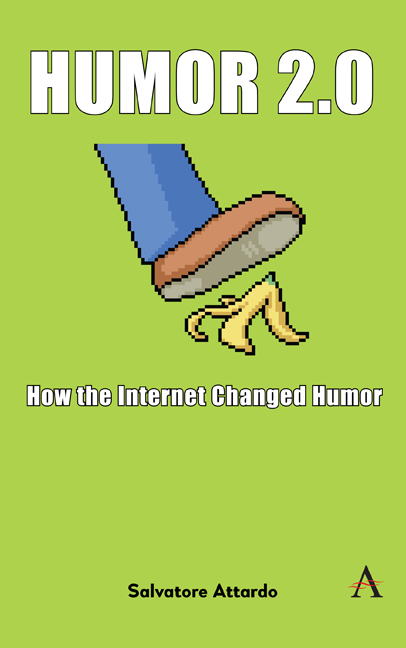5 - The Compilation
Published online by Cambridge University Press: 28 February 2024
Summary
The compilation of gags preexists the internet. America's Funniest Home Videos debuted in 1989. It has been running uninterrupted since 1990. It was directly inspired by Kato-chan Ken-chan Gokigen TV (加トちゃんケンちゃんごきげんテレビ, Kato-chan Ken-chan Gokigen Terebi), a Japanese TV show that featured a segment of home videos sent in by viewers. Indeed, it pays a royalty fee to the Tokyo Broadcasting System.
Conceptually, the compilation is not a new idea at all: collections of sayings or of notable passages have been popular since ancient time. What is different is that the medium of video made it impossible for the average person (i.e., someone without a video editing suite) to create collections of highlights until the advent of cheap or free video editing software. Today, any smartphone contains video editing software that would have been found in a well-equipped TV studio or in a film production company. So, here too we see that the affordances of the technology have facilitated the emergence of a new genre by allowing the general user to extend a practice that was common in other media (e.g., writing).
However, the convergence of video editing software and the existence of platforms to share publicly these video clips were necessary for the form to become as popular as it has become. The America's Funniest Home Videos phenomenon is still a centralized broadcast model, in which individuals send their video clips to a central repository which packages them and re-broadcasts them. With the advent of YouTube, Vine, TikTok and many other platforms dedicated to video clips and eventually the widespread distribution of videos in platforms such as Facebook and Twitter which were not necessarily video-centric, the video clip distribution becomes decentralized.
The sheer number of videos and the indexing capacities of platforms such as YouTube and Google make it possible to search for videos that share some feature and therefore allow the creation of thematic compilations (fails, lucky breaks, funny animals, people behaving badly, etc.).
The most salient feature of a compilation (be it thematic or not) is its lack of narrative structure. The syntax of the compilation is mere juxtaposition: one video follows the other, at most motivated by thematic similarity.
Information
- Type
- Chapter
- Information
- Humor 2.0How the Internet Changed Humor, pp. 63 - 70Publisher: Anthem PressPrint publication year: 2023
